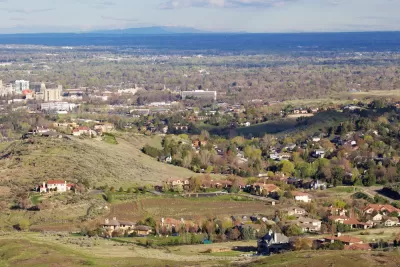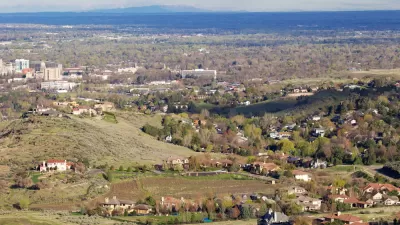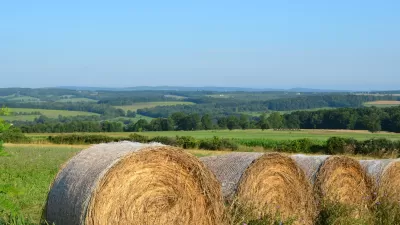Will the arid West’s farms and settlements thrive for another century? Better conservation policy should take a longer view.

Gracy Olmstead writes on the rapid growth in the Mountain West, where suburban development is competing with and water and farms. Boise, for example, sits adjacent to prized farmland known as the Treasure Valley, and the "is the single largest contributor to the state’s economy."
Olmstead considers the pressure on growth happening in just one place, "an exurb of Boise called Meridian that was [in 2017] the fifth-fastest-growing city in the United States." And the larger demographics also put pressure on this region: "among the top 10 states that grew from 2017 to 2018, the Census found that the top four are Western, arid states: Nevada, Utah, Idaho, and Arizona."
Olmstead turns to the long history of settlement in the American West, and focuses on the 19th-century explorer John Wesley Powell: "Perhaps more than any other man of his time, he comprehended the limits of Western geography, and suggested that inhabiting the land would require a far different set of rhythms than those we had cultivated up to that point." Yet U.S. officials of the day went on handing "out land in rectangular 160-acre parcels—and ignored the implications of the west’s aridity."
Today, regional planners may consider public-policy innovations such as Transfer of Development Rights (TDR), and Olmstead suggests Western areas may want to follow this approach, where "a developer can buy a landowner’s development rights and transfer them to a different area." "Argrihoods," such as Serenbe outside of Atlanta, may also save farmland alongside development. Still, Olmstead concludes that "one of the most important challenges for today’s farmers in the West will be decreasing the gap between their land’s agricultural value and its real-estate development value." To find solutions, "Powell suggested another way forward: a more local, regional approach, in which farmers might work together to protect their water rights, desert cities might steward resources more wisely, and Western towns might cultivate cooperation and shared trust."
FULL STORY: The Forgotten Treasure In Western Land

Planetizen Federal Action Tracker
A weekly monitor of how Trump’s orders and actions are impacting planners and planning in America.

San Francisco's School District Spent $105M To Build Affordable Housing for Teachers — And That's Just the Beginning
SFUSD joins a growing list of school districts using their land holdings to address housing affordability challenges faced by their own employees.

The Tiny, Adorable $7,000 Car Turning Japan Onto EVs
The single seat Mibot charges from a regular plug as quickly as an iPad, and is about half the price of an average EV.

With Protected Lanes, 460% More People Commute by Bike
For those needing more ammo, more data proving what we already knew is here.

In More Metros Than You’d Think, Suburbs are Now More Expensive Than the City
If you're moving to the burbs to save on square footage, data shows you should think again.

The States Losing Rural Delivery Rooms at an Alarming Pace
In some states, as few as 9% of rural hospitals still deliver babies. As a result, rising pre-term births, no adequate pre-term care and "harrowing" close calls are a growing reality.
Urban Design for Planners 1: Software Tools
This six-course series explores essential urban design concepts using open source software and equips planners with the tools they need to participate fully in the urban design process.
Planning for Universal Design
Learn the tools for implementing Universal Design in planning regulations.
Smith Gee Studio
City of Charlotte
City of Camden Redevelopment Agency
City of Astoria
Transportation Research & Education Center (TREC) at Portland State University
US High Speed Rail Association
City of Camden Redevelopment Agency
Municipality of Princeton (NJ)




























